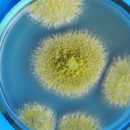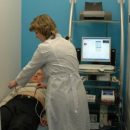Legionellez is fairly considered a dangerous disease and therefore scientists do not cease to study his excitress and insubunion - insidious Legionell. Her Deceit is not just words, but the behavior of malicious bacteria in the body. Read more about this - read in the article.
Content
 Empire «Diseases of legionnaires» For breeding inside the body, chooses, it would seem, the most inability - phagocytes or «devouring cells», whose task just eat bacteria. It turns out, Legionella destroys intracellular «Tracks», on which digestive bubbles of phagocytes are moving, and they are not able to get to it.
Empire «Diseases of legionnaires» For breeding inside the body, chooses, it would seem, the most inability - phagocytes or «devouring cells», whose task just eat bacteria. It turns out, Legionella destroys intracellular «Tracks», on which digestive bubbles of phagocytes are moving, and they are not able to get to it.In a certain sense, all living organisms (including the human body) are terrible owners trying at any cost «defend» from someone else's biological material using the immune system. The beginnings of this approach appeared in the most simplest organisms - then the bacteria were purposefully synthesized by enzymes for protection against viruses. At the next stage of evolution, such mechanisms have had a broader spectrum of action, destroying without disaster and viruses, and bacteria.
Gradually, immunity was improved: individual specialized cells appeared, complex signal cascades, a variety of ways to destroy potential «enemies» and even memory effect. In the human body there is already quite formed and finished to action imune system. But even the chemical and pharmaceutical industry could not finally eradicate a microscopic threat: over the past millions of years, the evolution of bacteria also did not stand in place, and they learned to hide from protective reactions of the host organism in a wide variety.
Phagocytosis is an important feature of the cellular incorpore immunity, which is carried out by cells called phagocytes, they «swallow» Alien microorganisms.
So, this very phagocytosis, for which Ilya Ilyich Mesnikov, together with Paul Erlich, received the Nobel Prize hundred years ago, does not require several stages of recognition, activation and other long-term training. Phagocyte cells determine the bacterium according to characteristic molecules, which is part of the wall of the latter. After which they completely absorb bacterium. The latter turns out «sharpened» In a cell in a separate bubble, surrounded by membrane. After some time, another bubble is merged with him, carrying digestive enzymes that «eaten» Bacteria Zamivo.
But in the case of legionells it does not happen. Roy and his colleagues proved that bacterium is worried at the stage of absorption «Through» In the cytoplasm of host cells, a whole family of protein-ankirins that interfere with the normal motion of bubbles.
As scientists found out, this is due to the type of secretion, allowing to introduce bacterial proteins directly in the cytoplasm of the host cell. These proteins prevent the assembly and restructuring of microtubules - thin threads that penetrate all intracellular space and ensure the movement of individual organelles inside the cell.
As a result, Legionella remains time to get out of imprisonment, and already inside the cell does not threaten it - how to defend against the action of bacteria from the inside, the cells of the body have not come up with. It is not surprising that mortality from legionellosis without treatment reaches 20%.
By the way, the development of fundamentally new types of treatment on the basis of discovered phenomena should not be expected. As even 50 years of experience of antibiotic therapy shows, bacteria for billions of years have learned to rebuild much faster than man.
New diagnostic techniques have already been developed. Immunodiagnosis that allows you to quickly (within 24 hours) to highlight the antigen (determining the nature of the disease) in all types of pneumonium (including legionell), molecular diagnostics - detection of DNA of the disease, express diagnostics - cheap, not requiring special laboratory conditions. Methods for disinfection of premises and air conditioning systems (chlorine, bromine, ultraviolet, heating over 60 degrees, other special needs).
As for molecular diagnostics, an international group of scientists, consisting of American, French and Israeli specialists, has already been deciphered by the Legionella DNA and this discovery should be very helpful in the timely identification of this cunning pathogen «Diseases of legionnaires».









